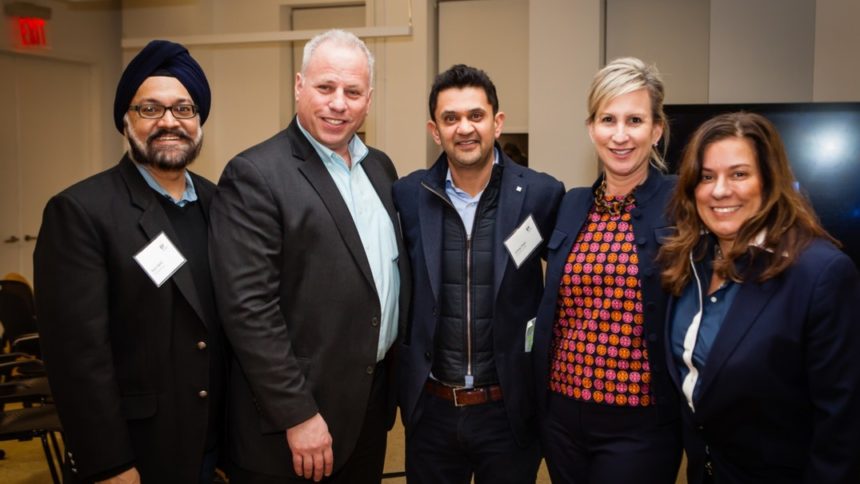If you follow blockchain news, you’re probably convinced by now that the applications are endless. Every day it’s something new: blockchain to create an egalitarian internet, blockchain to support cloud businesses, blockchain to transform compliance, blockchain to replace the world’s currency system, blockchain to help the economy function more efficiently and securely, blockchain to change the world.
If the predictions are true, this technology has the potential to be as big and impactful as the internet. At EY, we’re believers, and we’re constantly looking for ways to push the boundaries of what’s possible. So we thought, what better way to reimagine the future than to ask the innovators who will create it?
Last month, the EY Foundry partnered with Fordham University business students to dream up a few more ways blockchain will reshape our future. In our EY Imagination Challenge, we asked these students to imagine one way blockchain and cryptocurrency adoption could change the world. Unlike other innovation challenges that focus on a specific startup (new business) idea, this challenge required students to use their creativity and imagination and not let traditional barriers get in the way of what the future could be. The students presented their ideas in teams to a panel of EY judges, who voted on one ultimate winner. We’re amazed by what the teams came up with!
Some of my personal favorites include:
Internet of Blockchain and Things. Spoiler alert – this one was the winner. This team conceptualized how blockchain could affect Internet of Things (IoT) in a smart city. By applying new technologies such as blockchain, IoT and identity management solutions in tandem, we have the potential to create a seamless, secure environment between governments, corporations and consumers.
Free movement. What if cars drove themselves, everyone was TSA pre-checked, and train tickets were obsolete? Blockchain has the potential to decentralize ownership while virtualizing identity, so that travelers can move freely, without stopping to pay or pass security. At its core, this concept is a colossal time saver, but it also has huge potential to anonymize movement.
Medical made easy. Doctors serve patients best when they are well-informed about the patient’s medical history. Moving clinical records to the blockchain would increase access to medical records while also improving patient security and reducing costs. Patients would also gain more control over their data if they owned their complete blockchain, giving them the power to share (or not share) their records.
Credit, debit or crypto? Not many people carry cash in 2018. ATM runs are a hassle, and there’s always a fear of theft. Conceptually, however, cash has a host of benefits. It’s instant, anonymous and doesn’t cost you anything. This group conceptualized a dollar “coin” backed by a digital identity that would become the official government currency.
Global development. Ever made a charitable donation and wondered exactly how your money was spent? Blockchain offers a chance for NGOs to change how they manage and distribute donations, ensuring funds go to people in need while minimizing corruption.
I’d like to personally thank these impressive students for their hard work as well as Professor Benjamin Cole, Associate Dean Lerzan Aksoy and Assistant Dean of the Fordham Gabelli School Bob Daly for their sponsorship and support. A big shout out to my colleagues, Navin Sethi, Michael Meisler, Danielle Clark and Lizette Robinson, too for their participation in the event. Reimagining our collective future is only possible by gaining perspective from a diverse group of imaginative thinkers. Watching passionate innovators dream up the future opened our eyes and inspired us all to think even bigger.
Blockchain isn’t just a buzzword – it’s something to believe in and plan for. How do you envision blockchain changing the world?
